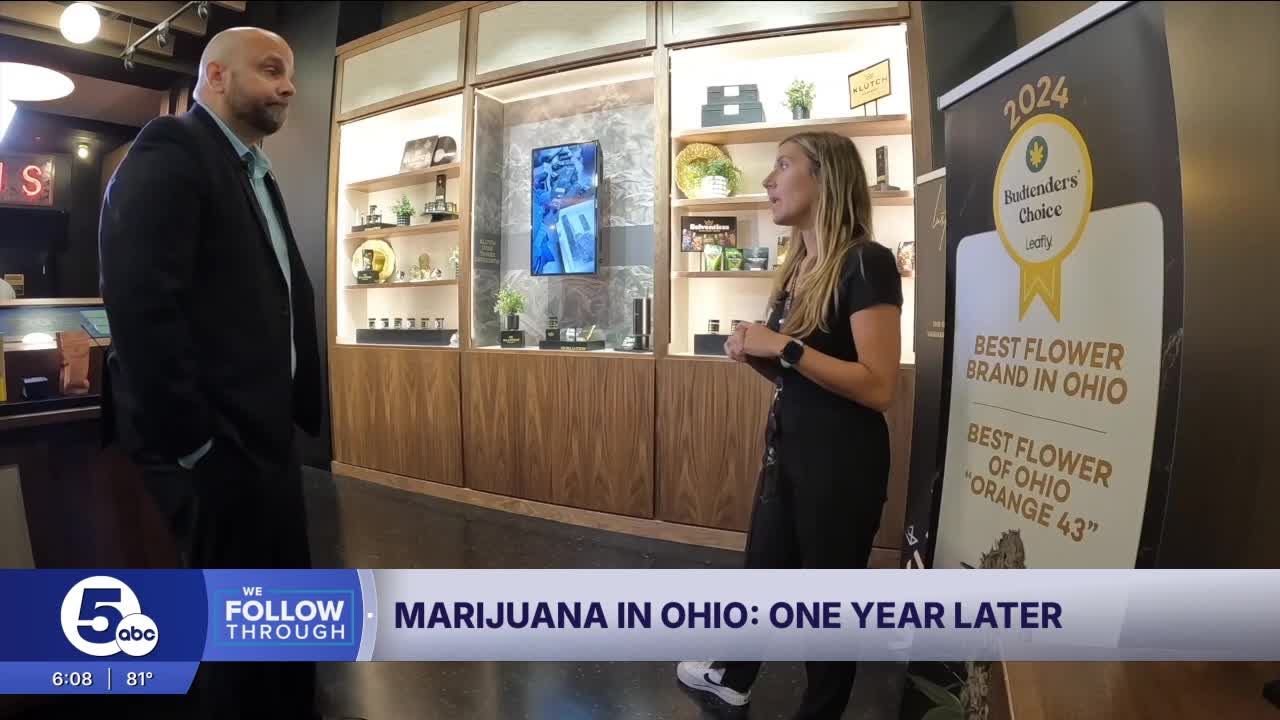CLEVELAND — This month marks one year since dispensaries started selling recreational marijuana in Ohio. Last August, News 5 showed you the long lines of people waiting to buy their cannabis. There was excitement, but for some, there were concerns and fear about what more cannabis availability could mean.
Before recreational marijuana was legalized, you had questions. We had answers:
RELATED: We answer your questions about recreational cannabis
We’re following through with an update on what’s happened with health-related issues in Northeast Ohio one year later.
IT ALL STARTED WITH MARIJUANA
For Joe Varanese, his early teen years of smoking marijuana turned into real problems in high school. “The first thing that I did even before I drank was smoke marijuana,” said Varanese. “(By senior year) I had pretty much experimented with all substances from opiates to cocaine to hallucinogenics.”
It’s the kind of experience that worries him and others with so much more marijuana now available in Ohio. “Why we would then want to bring another drug to the forefront?” asked Carole Negus, the director of Nursing at the treatment center Stella Maris in Cleveland.
NO DRAMATIC JUMP BUT DRAMATIC CASES
The center said it has not seen a dramatic increase in marijuana-related cases in the past year since recreational cannabis sales started in Ohio.
It did say cases of cannabis use disorder have gone from 1,900 to 10,000 since 2013, a disorder that can include disturbing effects.
“I had a kid one time come in who thought he was a dog for three days, and all he smoked was marijuana. That was it,” said Negus. “(He) crawled around on the floor, barking and drinking out of a water bowl.”
She told us she’s seen a shift in attitudes about cannabis, with people not taking it seriously, and some of the repeat client cases are also troubling.
“The ones that come back that have relapsed, almost always the comment to me is, ‘Well, you know, I started smoking marijuana because that’s not really what my drug of choice was,’” said Negus.
SELLING COMES WITH TRAINING, RESPONSIBILITIES
We were there when the company Klutch Cannabis opened its downtown Cleveland store on Aug. 1. It’s the fourth overall shop for Klutch in Ohio.
“We definitely see an increase with the adult-use customers,” Lauren Delande told us. She’s the VP of Retail Operations for Klutch. “The state licensed dispensary there’s training requirements that we all have to follow.”
She told us at Klutch that they pride themselves on getting the right information to customers.
“We’re taught… to go over the risks and considerations with patients and customers as well,” said Delande. “Definitely storage and locking it up and how important that is and how to use it especially if you’re new…starting low and going slow.”
The state keeps track of cannabis sales. The first report came out last August.
There has been a steady increase in edible sales, which started around 74,000 units, peaking at 110,000, and oil for vapes, which started at nearly 94,000, then at more than 178,000, both products peaking during the same week last month.
UH: NO INCREASE, BUT STILL RISKS
“I personally am in favor of legalization,” said Dr. Ryan Marino, who is a medical toxicologist and emergency physician for University Hospitals. “There are a lot of safety and regulatory things that it can bring.”
He also acknowledged the risks, particularly with today’s products that have high potency levels and higher dosages. However, he told us the fears some people had of emergency rooms flooding with marijuana-related problems just haven’t happened in the past year.
“And I think nationwide it hasn’t been that dramatic of a problem in terms of mass psychosis kind of effects,” Marino said.
The National Institutes of Health reported this year,”…there is some evidence of increases in emergency department visits…” nationwide, but more studies need to be done.
OTHER ENTITIES' REPORTS OR NOT
Cleveland Clinic told us it’s “seen a gradual increase in marijuana-related vists to (its) emergency departments over the past 10 years….”
And the way the Cuyahoga County Board of Health keeps records, it “does not include…THC/marijuana/gummies…we do not have any data to offer…” meaning it’s not even tracking it.
For Negus at Stella Maris, she said there’s a lot of cannabis being used. “Eighty percent of the clients walking through the doors smoke marijuana,” she told us.
As for Varanese, he’s managed to stay sober for the last 5 years.
He’s now a counselor at Stella Maris, where he said he has seen more clients depressed and isolating themselves. “That could lead to other things whether it’s mental issues, suicide stuff like that,” said Varanese. “And people don’t like to make that connection between mental health, marijuana and suicide, but that’s a real thing, too.”
Marino said people have reported health benefits from cannabis when it comes to things like nausea in cancer patients and problems with pain.
Delande told us some PTSD cases have been helped by THC.
Negus said she hopes those who are selling cannabis put some money aside to pay for the psychosis cases that will happen in the future.





